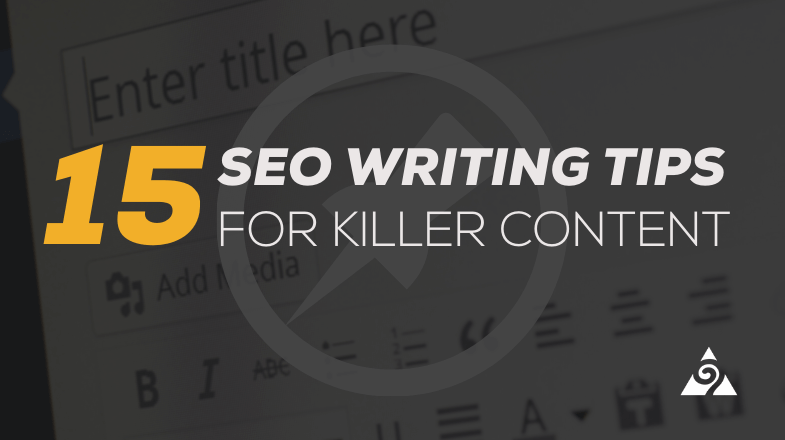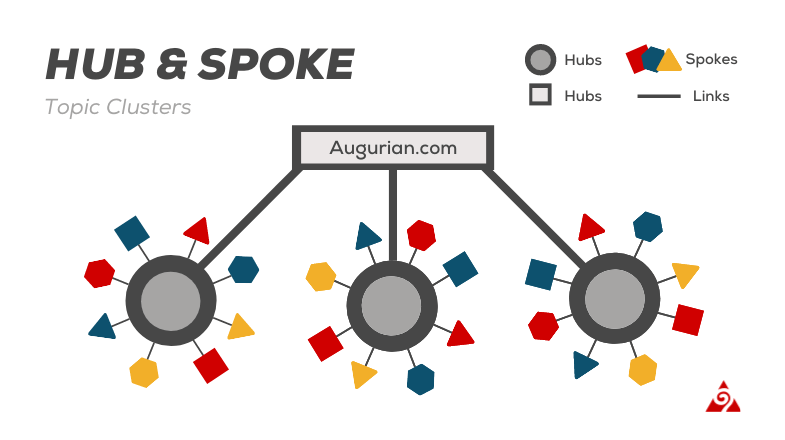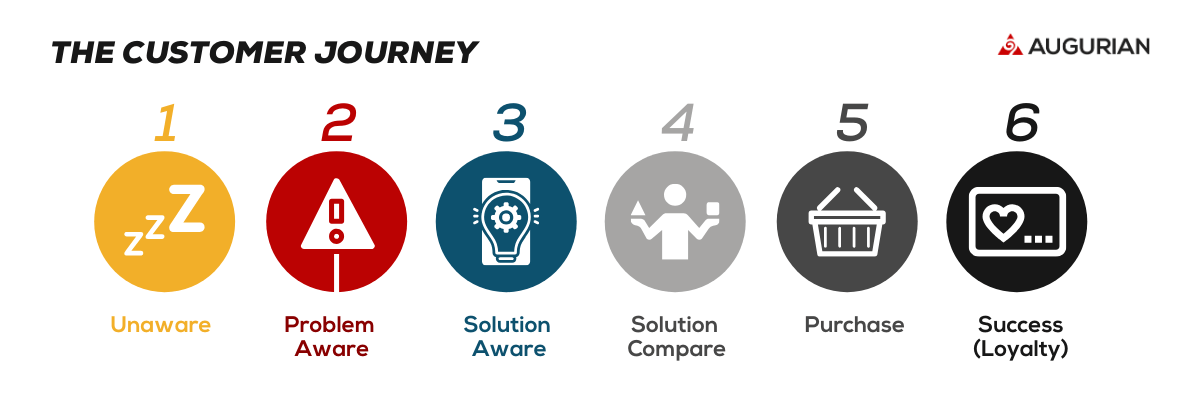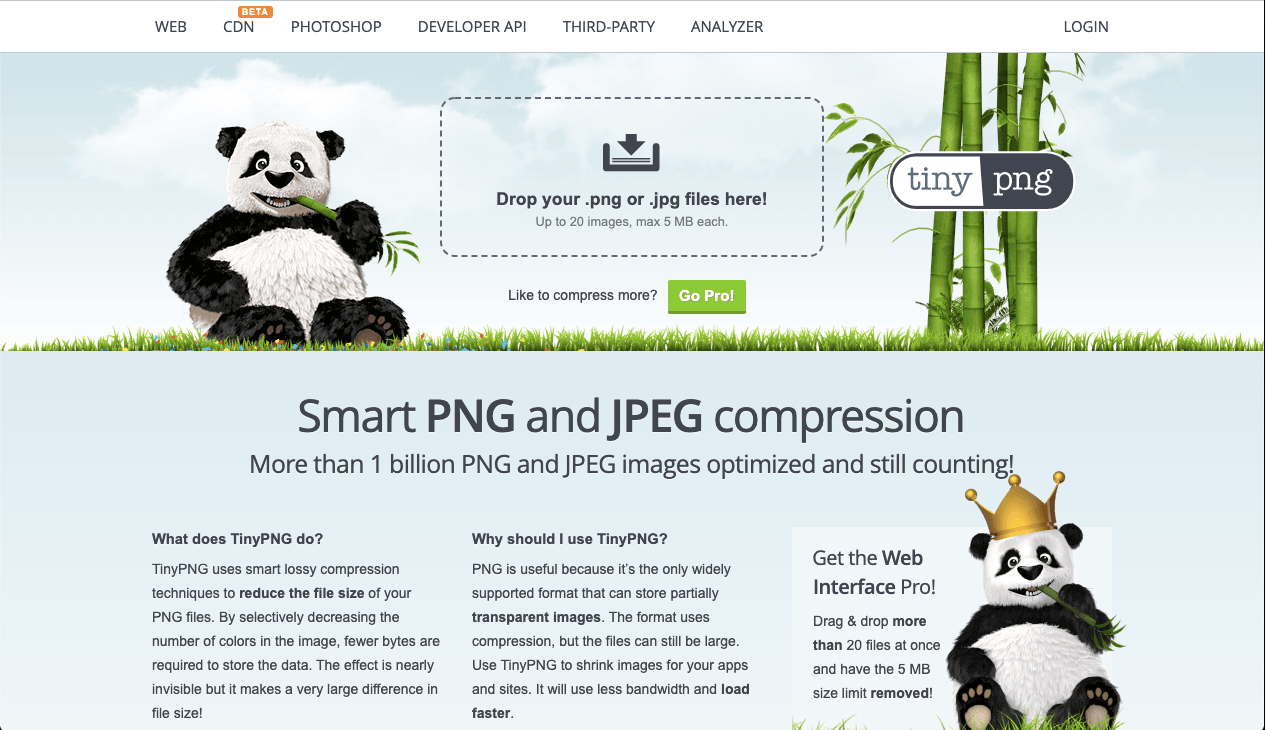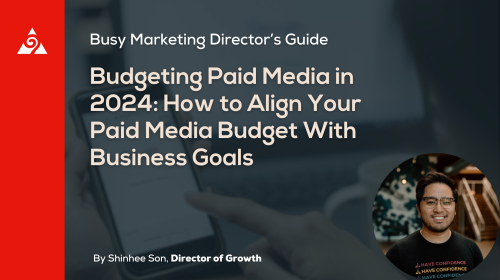Creating high-quality search-engine-optimized (SEO) content can be integral to the growth of your business. Engaging SEO content can connect you with target audiences at all stages of their customer journey, driving brand awareness and conversions while building SERP authority.
Sounds awesome, right? Without the right tools and tactics, it’s much easier said than done. When it comes to SEO content writing, marketers and writers face an ongoing challenge: striking the perfect balance that makes content both optimized for search engines and engaging for consumers.
This guide will give you the tools and SEO content writing tips you need to create top-notch SEO content, as well as advice on how to write blogs for SEO that will garner a larger audience.
Skip to a Tip:
- Plan a Hub & Spoke Strategy
- Try the Skyscraper technique
- Opt for evergreen blogs
- Cater to customer journeys
- Visualize your page first
- Speak directly to personas
- Consider keyword intent
- Be smart about internal links
- Use anchor links for UX & SEO
- Provide unique and original value
- Inject engaging images and media
- Protect your page speed
- Choose the right post length
- Make your CTA loud-and-clear
- Don’t forget to optimize titles and metas
What is SEO Writing?
SEO writing is an approach to creating content that uses search-engine-optimization strategies to optimize your content for search engines. This helps your content rank faster and higher in the search results than your competitors, getting you more traffic where it matters to you most.
A few of the main goals of SEO writing include:
-
-
- Building topical authority and trust for your site while establishing brand awareness.
- Driving relevant, high-quality inbound traffic to your important converting pages.
- Providing educational touchpoints to nurture prospects down their funnels.
- Improving paid search landing page quality scores to lower campaign CPAs.
-
Content and SEO
Content and SEO intertwine; you can’t fully succeed at one without the other. To truly benefit from SEO writing you must understand the relationship between content and organic search best practices.
What if you forget to take SEO into consideration? You could end up with beautifully-written content that goes largely ignored on page 40 of the search results. On the other hand, if you instead create a low-quality, keyword-stuffed page, it may rank highly for a moment but will eventually fail if it reads poorly to prospects or doesn’t speak to their specific search intent.
SEO Content Writing
At the end of the day, well-written content and well-researched SEO tactics are what produce results, and that is why content and SEO go hand-in-hand. But, what is SEO content writing, actually? And, what makes a great SEO content writer?
SEO content writing unites the creative art of writing with data-driven research and marketing strategy to produce engaging content that ranks high and drives prospects to convert. The importance of research and strategic planning in this process cannot be understated.
An SEO content writer researches the best keywords and top-ranking competitor content to see how your site measures up and where it can improve, and uses all of that information to create quality content that is hyper-relevant to your audience’s hope and needs.
15 SEO Writing Tips for Killer Content
Whether you’re wondering how to write a blog article for SEO or, more generally, how to write good SEO content, Augurian has you covered. We’ve put together this list of content-writing tips to guide you towards SEO writing excellence.
This long list of content-writing tips and tricks includes advice for content strategy, planning, and production.
1. Develop a Content Strategy via Hub & Spoke
The hub-and-spoke model is a proven tactic for planning and organizing long-term SEO content strategies. Similar to a mind-map, it can be used to organize topics by hubs (main themes) and into spokes (hyper-specific subtopics) which will inform which topics you write about and how they link together.
There are three main benefits of a hub and spoke strategy:
- Drive The Right Traffic: Builds a scalable long-term strategy that drives relevant traffic.
- Generates Leads Highlights topical gaps to ensure there are educational touchpoints at every stage of the customer journey so there is always next-stage content ready for prospects with long buying journeys.
- Boost SEO Value: Smart, organized, impactful internal links that build authority and trust around topics that relate directly to your business and prospects’ customer journeys.
To start, you must understand your audience and study their customer journey. This will reveal what type of content users find valuable at each stage in the marketing funnel. It will also provide you with a roadmap for creating and publishing content that nurtures your relationship with your audience and your SERP authority.
2. Shortcut To Topics That Win With The Skyscraper Technique
The Skyscraper Technique is a strategy for link building and can help you identify topics that are working for your competitors. By improving on high-performing content that already exists, you can short-cut your way to ousting the current winner without having to start completely from scratch.
- Find a relevant piece of high-performing competitor content
- Re-create content that blows the original out of the water
- Ask all who link to the original content to link to your new, higher-quality piece instead
This shortcut works because you know the original content is already in demand and has an audience. By creating revamped content, you get to take advantage of the opportunity to excite that audience. If everything goes as planned, the skyscraper technique gives you the potential to outrank the original content and steal its traffic.
#3.
3. Opt For Evergreen Over Trending Topics
Trending topics are fleeting; here today and gone tomorrow. Choosing this sort of topic means that it will soon be irrelevant and you’ll be stuck with useless content. Instead, go for evergreen topics; these are relevant now and will be for many years.
Evergreen content has high longevity and is low maintenance. Although SEO thrives on consistently publishing new, fresh content, in-depth content that drives high engagement never goes out of style. In fact, evergreen content that is truly high-quality will maintain good engagement, continue to rank higher, and drive more traffic to your site. Updates and small refreshers over the years are often all that is needed to maintain a flow of traffic for these important topics.
One challenge that comes with evergreen content is that, because it’s so impactful, it can be competitive. You’ve got to make sure yours is better than the competition, but investing a lot of time and resources into the initial creation can easily be worth the investment.
4. Find Topics By Understanding Audience’s Customer Journey
If you want to know how to write SEO content that speaks to your audience, you must understand their customer journey and create content that is relevant. Identifying personas (fictional models of your target prospects) is just the first step in understanding who buys from you and why. The next step is to understand their decision-making process from problem unawareness to advocacy.
Here are Augurian’s six stages of the customer journey:
-
- Unaware
- Problem Aware
- Solution Aware
- Solution Compare
- Purchase/Decision
- Advocacy/Loyalty
The more effort you put into understanding buyers’ journeys, the more your content will resonate with your targeted audiences. Put yourself in your customers’ shoes to identify each stage and create search-friendly content based on your findings.
5. Start With a Visual Template (Map Out Your Page)
It’s proven that posts and pages with clear structure result in more conversions. Content is all about creating an intuitive, user-friendly experience. Customers are more likely to engage if they can easily understand your message or grasp the main takeaways of an article based on headlines. Creating an outline or template before writing content is more impactful than many realize.

Guide users through the content and allow for easy skimming by:
- Using clear, engaging, keyword-rich headings
- Intuitively choosing and ordering subtopics
- Splitting up long paragraphs
- Including bullet lists to simplify information
- Dispersing images, graphs, and/or graphics
6. Tailor Your Tone To Target Your Audience Personas
Whether your goal is to learn how to write SEO headlines, how to write SEO blogs, or simply how to write effective SEO content, aligning your tone with your target audience personas is a great place to start.
Audience personas are fictional people, based on facts from research, that represent ideal customers. Each character has different goals, challenges, and backgrounds; so they will respond differently to various writing styles and topics.
Personas should be central to your content strategy, and the starting point for creating content. Producing content with a specific target audience persona in mind means producing content that’s more relevant to readers – and more engaging.
7. Consider Search Intent When Targeting Keywords
Whether you’re doing SEO blog writing or creating a landing page, targeting keywords is critical. The keywords you include on a converting page will be much more transactional than the language used in an educational blog about the topic in general. It’s vital to choose the right types of keywords for each page in order to attract the most relevant users.
To help identify search intent, consider these three levels of search intent:
- Informational: Searching to learn. These are high-funnel keywords in the problem aware and solution aware stages of the customer journey.
- Navigational: Searching a specific brand or site. These mid-funnel keywords come into play more when prospects in the solution compare stage begin to look at you vs. competitors.
- Transactional: Searching with the intent to purchase. These low-funnel keywords are direct and speak to those in the purchase stage of the customer journey.
Taking search intent into consideration is a necessary part of the keyword research process in blogging for SEO success. After all, Google displays results that match a searchers’ queries – and it’s getting better at this all the time– so take this process seriously.
8. Link Carefully (And Often) To Other Relevant Pages On Your Site
Implement internal links when you write about a topic and need further explanation, or to funnel readers to next-stage pages. Make sure you’re only linking to relevant content that’s truly helpful. Linking to other pages on your website that aren’t relevant will confuse customers, harm the user-behavior metrics of those pages, and could make you seem untrustworthy.
Internal linking is a powerful SEO tip for two primary reasons:
-
- Internal links actually help search engines understand your content.
- They help users stay on your website and explore what you have to offer.
Linking is important but only link when relevant and appropriate. Over-linking could run the risk of harming the user-experience and may not have the same positive SEO impact you intended.
9. Use Jump Links For UX and for SERP Features
Jump links, or anchor links, bring the user to a specific part of a page that is most useful. This is great for making large pieces of content easily navigable. These links can also be tracked for a more robust understanding of on-page user behavior.
Jump links improve the user experience because they take users exactly where they want to go. It’s even possible to capture special SERP features with jump links. As your page becomes more user-friendly, your bounce rate may decrease, crawling and indexing may improve, and your SERP rank may increase.
10. Source Original Data and Reports (AKA Link Magnets)
Create well-written original content with data and reports, and make sure to give it SEO visibility. By implementing original data and reports in your content, you can naturally attract backlinks and returning traffic. This method of encouraging linking is far more reliable than just hoping that people like your content enough to link to it – you’re providing authentic, unique value.
How do you know what will appeal visually and mentally with an audience? And, how can you find this data and create this sort of content? Take a look at our list of essential SEO content marketing tools for some great ideas.
11. Include Engaging Images, Infographics, Tables, And Video
Images, infographics, tables, and videos will bring your content to life. and make it more engaging. Video content, for example, has been proven to have a 41% higher click-through-rate than text.
Visual content appeals to users’ emotions and creates intimacy. Think about it from a personal perspective: how appealing is content that doesn’t have any images? Not at all.
Infographics are also very valuable. They can help convey confusing data and facts in a simple, visually appealing, and engaging way – and they can work well for promoting content on social platforms. Once posted on your website and shared, infographics can also generate backlinks.
12. Protect Your Page Speed By Reducing Media File Sizes
Did you know that 40% of people will leave a page that takes more than 3 seconds to load? It’s SEO 101 to learn that site speed is a very important factor in ranking. Every image or piece of media that you insert in your blog should be optimized for site speed. You can use tools like Smush, or TinyPNG.com, to quickly reduce file sizes without sacrificing visual clarity.
Even if your site is full of amazing content, if it takes too long to load, users won’t be willing to wait around for it, and neither will Google’s crawlers. Old and new pages should both load with lightning speed. Don’t forget to keep this at top of mind with each new page that you create.
13. Make Your SEO Blog Length Exactly What Readers Expect
Post-length for SEO is one of the most important things to take into account when you’re wondering how to write blog posts for SEO and the best user experience. There are many myths surrounding the best SEO post length.
The best SEO post length will vary depending on a variety of factors including but not limited to:
- The type of page it is (blog vs. landing page)
- Users search intent (quick answers vs. in-depth analysis)
- The amount or type of content that Google has decided is needed to answer to that intent for that specific topic.
When in doubt, look to how long the content is on high-performing pages. Some topics simply require more depth, while others are best kept at surface level. Keep in mind that, although Google often loves long, in-depth articles. It doesn’t love longer content that is hard to read –and neither do users.
A blog that is appropriately in-depth, readable, and on-topic will be most relevant for readers. Check out our guide on how to validate blog topics for more tips.
14. Call Out Your Call-To-Action – And Make It Loud and Clear
Once you’ve created your content –and you’re sure that the writing is stellar and optimized for SEO– there’s one thing you can’t forget: the call to action. If a reader makes it to the end of your blog (or other types of content) and doesn’t know what to do next, you’ve failed.
Even if that piece drives traffic, if there’s no CTA (call-to-action), it won’t drive conversions.
When considering how to write good blogs for SEO, you must include an obvious, yet creative call-to-action that directs readers to content that speaks to the next step in their journey. Whether you want them to read another blog, subscribe to a newsletter, or make a purchase, you’ve got to say it in a way that makes readers click.
15. Don’t Forget To Optimize Your Title and Meta Description
A key step in understanding how to write an SEO-optimized blog post is knowing how to optimize the title. Since your title will be featured on the SERP, you should include your exact primary keyword. The SERP is competitive, though.
Inject your title and meta descriptions with striking or engaging creative headlines for your SEO-friendly blog post that drives clicks. Readability is key.
Don’t underestimate the importance of your meta description. It helps search engines and searchers understand what the content is about and whether or not they want to click through.
A great meta description should…
-
- Be 150-160 characters
- Be clear and unique
- Contain keyword(s)
- Contain a CTA
Our friend, Ben Sailer discussing his idea of content performance standards and why they’re important.
Explore SEO Content Tips And Strategies With Augurian
SEO-friendly content writing tips like these will increase the quality of your content, generate more traffic, and improve your brand. SEO may seem daunting, but it’s really not so hard to wrap your head around the basics of SEO content marketing as long as you can try to see things from the perspective of your audience.
These tips are meant to help you widen your understanding of SEO and give your brand a boost.
If you want to take a deep dive into SEO and really see what it can do for your business, learn more about Augurian’s unique framework for digital marketing.
We specialize in winning content strategy and SEO writing that converts. Explore our digital marketing blog to learn more about content fundamentals or explore our strategic content services.
